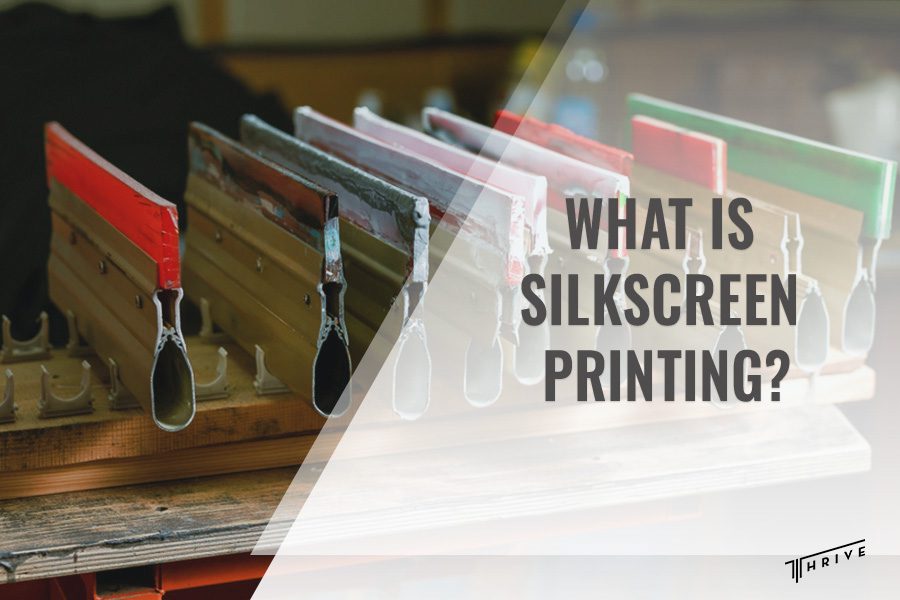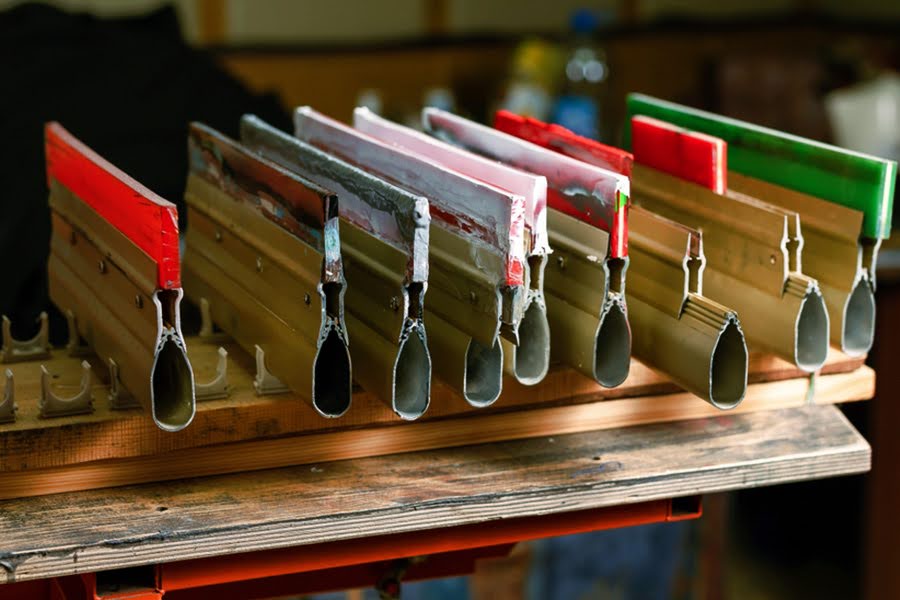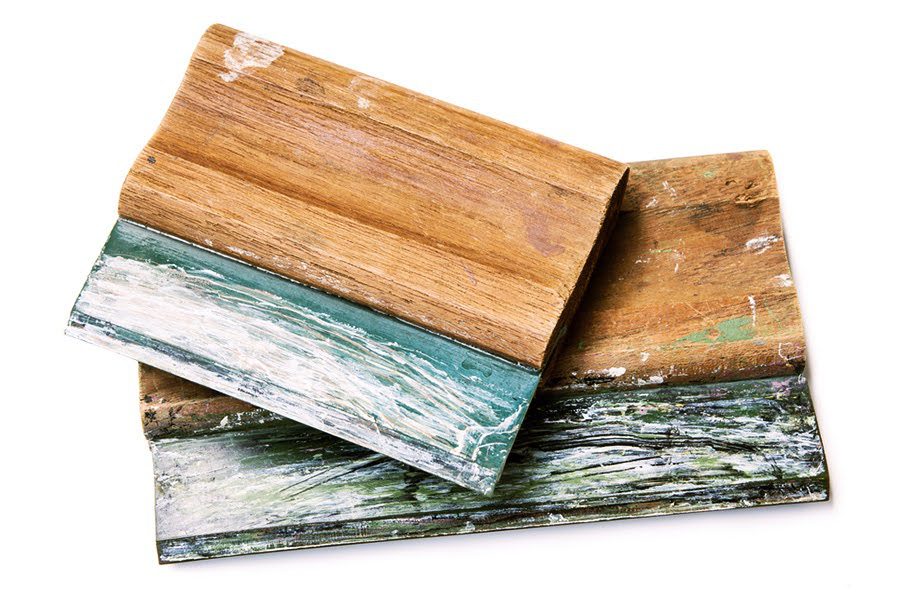
We use a wide range of screen printing tools to make high-quality printed clothes for your business. They include everything from ink, presses, and dryers to platens, cutters, and squeegees. But what is a squeegee in screen printing, and what makes it one of the equipment in our printing company?
Let’s reveal all the secrets of this simple yet so important tool in screen printing.
What is a Squeegee in Screen Printing?
The squeegee is one of the vital printshop tools we use in the screen printing process. Whether for manual or automated use, the squeegee is responsible for pushing the ink. More specifically, the squeegee is the tool we use to force ink through the stencil or mash screen onto the fabric beneath it.
The squeegee has a smooth blade that can be made from various materials. The blade is attached to a robust handle, so it can allow us precise ink control during the printing process.

Screen Printing Squeegee Types
Now that we have explained what is a squeegee in screen printing on fabric, we can safely continue by explaining the different types we use in our work. Every squeegee model is unique and offers various benefits, so we can make your garment prints look astonishing.
We decide what squeegee to use depending on the printing requirements, ink properties, the substrate, and the design itself. Consequently, the screen printing squeegee types can be divided by using different factors.
Shape and handle
The first two characteristics that distinguish the squeegee are their shapes and handles. The most common shapes of squeegees we use are:
- Square – also called straight edge, and we commonly use them for general screen printing projects,
- Round – also known as ball-nose squeegees which we use when we must print with heavier inks or on heavier substrates,
- Beveled – squeegees that we always use when we have to print on curved or uneven fabrics.
Normally, only the squeegees that are for manual screen printing have handles. In our screen printing services, we don’t typically use them because our process is automated. But, it is good to know that there are squeegees made from different materials such as wood, plastic, and aluminum.
Rigidity
When we are ordering screen printing equipment, we must pick the right ones, and we always consider its rigidity. In the screen printing industry, rigidity is measured in a durometer.
The squeegee rigidity is a crucial factor that determines the durability and quality of the print. As a rule of thumb, squeegees with higher durometers have harder blades, allowing us to completely sheer the ink.
On the other hand, the lower the durometer, the softer the squeegee, making them perfect for heavy ink deposits such as plastisol ink. Soft durometer squeegees are also good for making prints with special effects, including shimmers, glitter, and puffs.
Besides the manufacturing information, we can also identify the rigidity of the squeegee by its color. For instance:
- Red has a 65-durometer and a one-layer blade,
- Green squeegees are also single-layer but 75-durometer,
- Blue tools are 85-durometer single-layer squeegees,
- Yellow squeegees have three layers, of which one has a 70-durometer, the other 90, and the third 75.
- Red is also triple layered with 65/90/65 durometer.
Materials
Generally, the three most common materials squeegees are made of are polyurethane, neoprene, and rubber. Polyurethane squeegees are of premium quality, and we use them for our presses. They are suitable for both automatic and semiautomatic presses.
When it comes to neoprene and natural rubber squeegees are more affordable and differ according to their durability. Of the two options, neoprene are more wear and tear-resistant blades.
Depending on the materials they are made out of, there are standard and eco-squeegee rubber blades. Standard squeegee rubber blades have many benefits. They don’t make bubbles and carters while we are screen printing.
Size
You can’t entirely understand what is a squeegee in screen printing t-shirt if you aren’t familiar with the different sizes.
So, what size squeegee for screen printing do we use in our projects? The sizes of the squeegee we use depend on the project. They typically range between 2” and 72”. Most of the time, it is not a problem if the squeegee is bigger than the design as long as it doesn’t overlap with the frame.
How to Use Squeegee Screen Printing
The steps how to use a squeegee in the screen printing process. In our automated and semi-automated screen printing process, we install the squeegee on our machines and let them do the job.
However, in the manual screen printing process, the person printing is responsible for using the squeegee correctly. Some of our tips for the manual screen printers out there are:
- Take your time with mesh the screen preparation
- Find a position where you feel comfortable holding the squeegee
- To apply the ink to the fabric, you should push down and pull forward simultaneously
- Apply pressure from an angle between 70° and 80°
- If you are doing it correctly, the blade will slightly bend while you are applying the pressure
- Ensure you have an even stroke by having only a thin layer of ink on your screen

Conclusion
When you are looking for the best printing technique to use for your project, you should have a bigger understanding of the tools that are used in the process. As we answered one of the most commonly asked questions, what is a squeegee in screen printing, you are now one step closer to finding the perfect screen printing contractor.

Robert Fisher is the founder and CEO of Thrive Screen Printing and brings extensive experience in the screen printing and fulfillment industry.

